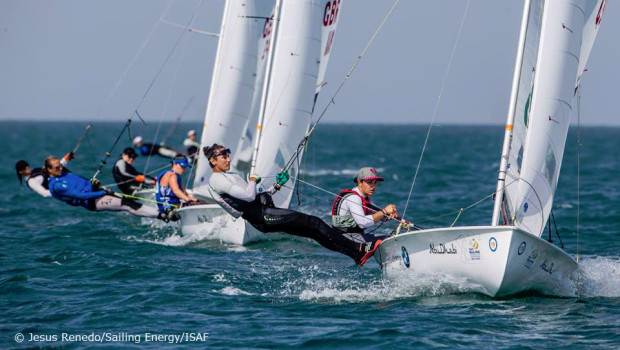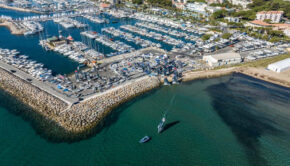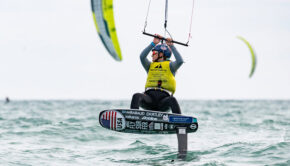Olympic Games: Sailing Must Change to Stay Relevant
Published on November 4th, 2015
by Mike Todd
As a past competitor in the Laser class, a current coach in Canada, and a fan of the sport, I see sailing now in the midst of an existential threat as it struggles to stay relevant in the dynamic world of Olympic sport. Fleet racing has been the accepted protocol throughout sailing’s history, but the hard reality is that the sport needs to better adapt to fit into the current requirements of Olympic sport.
With the Paralympic sailing classes already out of the 2020 Olympic Games, and with low revenue potential and skyrocketing costs for Olympic events, sailing has been a sport on the edge, doing their best to stay significant to the general audience. But athletes are faceless names to fans, regattas are poorly publicized, and Olympic Class sailing has become a lackluster spectacle.
ISAF has sought to develop World Cup events in an attempt to make sailing more relatable, making athletes qualify and adding medal races. These were necessary changes, but now sailing must adapt once again to try and alleviate the issue for the majority of fans: accessibility and confusion. We all remember the Irish Olympic Sailing video. Funny maybe, but regrettably that is the reality for most potential viewers.
A great example, which ISAF should look closely at, is another fringe sport which is easily identifiable, like sailing, but also isn’t mainstream. The World Surf League has done a brilliant job in making the sport accessible to all via live streaming of events and creating a buzz around the sport by creating high profile athletes to fight month in and month out in a world title race. Sailing could take many lessons from them.
The two major issues that Olympic Class sailing is currently struggling with is visibility (lack of online presence, no live streaming of events, no hype or excitement about our top athletes, etc) and comprehension of sailing from the general public (large courses, confusing strategy, high number of boats heading all directions, long races). Changes must be considered.
What if Olympic level sailing shifted away from traditional fleet racing and moved towards a Champions League format where the top 32 competitors in the world participated in a round robin knockout competition with numerous events held throughout the year, all streamed online.
One possible example of a structure is two-person heats which are 10 minute short course races or dual slalom races, best of three, winner moves on. This would allow for high action, plenty of boat on boat manoeuvres, easily understandable tactics for non-sailors (they won’t have an opportunity to separate so easier to see that the boat ahead is winning), small race areas for live streaming video, a limited number of boats (two boats warming up and two boats racing. Athletes switch in, which keeps costs to a minimum).
In the top 32 Champions League format, ISAF can create storylines around sailors, create buzz in title races, create fantasy sailing leagues and most importantly, create an overall interest in sailing. Have the top 16 in the Champions League automatically qualify for the next year while the rest have to re-qualify through a Qualifying Series. The Champions League season will culminate at the World Finals showdown at the end of every season. All of this will be live streamed on line with a strong social media campaign driving viewers towards the platform. Create drama and excitement and you will create viewers.
The positives are numerous, among them being how sailors will have better name recognition. ISAF will create an online video platform which will help promote sailing at all levels, from Champions League to Qualifying series to Junior ranks with upcoming stars. Sponsor dollars will become easier to secure with strong viewer numbers. Prize money will be increased due to stronger sponsor dollars, making sailing more viable for athletes as a profession. More fans will mean higher participation numbers worldwide as sailing will not only become visible but attainable. And, with the ability to re-watch heats, sailing schools the world over can finally stop watching the movie WIND on inclement days and watch the real stars of sailing!
With so many Olympic Class boats, this could be overwhelming for ISAF to take on themselves, but if ISAF partnered with a forward thinking Olympic Class, they could work together and implement the new structure. To make sure this is done properly and professionally, they must have a strong platform for online streaming with professional branding and associated Apps. They must have a strong social media presence where short clips are edited and posted quickly to let people know racing is on or upcoming. Post race interviews, updates, young upbeat announcers who are driving the excitement. Olympic Class sailing needs to revolutionize the sport.
Sailing has a considerable worldwide fan base which ISAF must capitalize on by creating a buzz around the sport if they want to stay viable, and changing the format, as well as live streaming and creating a brand around the best sailors in the world, is the only way to reach that goal. Although change is never easy, if sailing wants to stay relevant, change is necessary.









 We’ll keep your information safe.
We’ll keep your information safe.